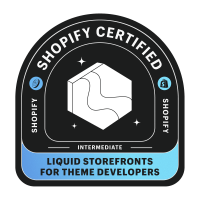“Above the fold” is a term used to define the area of a website, which is visible to the customer at first glance without scrolling. The term “fold” originated from the printing sector and is a precisely folded edge of the paper, additionally called fold line, used in the prep work for printing.
In a digital marketing sphere, the fold line would be the noticeable bottom edge of the web browser without scrolling.
Unique attributes in Above the Fold #
Regarding conversion rate and usability, it would certainly be wise to place crucial content in the “above the fold” of a website, in other words, in the instantly noticeable area. In this way, a page’s important web content, such as navigating and contact info, will undoubtedly be in the individual’s visual field.
Consequently, putting essential web content into the “above the fold” section can enhance the average time spent by site visitors and minimize bounce rate. Different browsers and screen resolutions need to be considered since the “above the fold” area can differ for each user.
Factors to consider for a mobile #
The boosting usage of mobile phones for web surfing further makes optimizing website design a bit complex. For example, mobile phones use a large selection of display dimensions. Furthermore, phone customers typically surf in portrait settings rather than landscape settings, turning the conventional page layout sidewards. With numerous people accessing websites across such a range of devices, present web design techniques require using the responsive form: taking advantage of versatile structures, photos, and cascading style sheets.
There is no fixed format for a web page in responsive design, and content reflows to a screen of any size. While the essential material still needs to be higher on the page, the pages should be made to urge scrolling more to ensure visitors don’t miss out on crucial web content.
How is Above the Fold measured? #
It is challenging to specify a solitary layer placement for a website. The exact area of the fold differs because of the selection of screen sizes (both desktops and laptops), display resolutions, web browser plugins, and sizes of multiple phones and tablets.
When identifying an average fold placement, most web developers and designers concur that the fold line goes to about 1,000 pixels wide and 600 pixels high. This is the best-case scenario for the most typical monitor/browser mix of 1024×786 pixels, with the browser window maximized and no mounted toolbars at the top pushing the content down. Your website’s analytics program should be able to tell you which are one of the most typical screen dimensions for your website visitors. While 1024×768 has generally been one of the most common, new dimensions are climbing in the appeal, such as 320×568 and 360×640.
The importance of Above the Fold for Search Engine Optimization #
Google Analytics supplies a tool that shows the noticeable content of a web page in different web browsers and display resolutions. Be careful when placing ads on the website. Numerous banner ads, which are put “above the fold,” can negatively influence the user experience. Google presumes that users search for details, not promotions. The search engine wishes to avoid the number of banners advertisements “over the fold,” not going beyond a particular limitation.
Google specifies 3 banners and also, therefore, modified its algorithm to make sure that the vital web content of a web page can be seen by users “above the fold.” If there were way too many banner advertisements at the top, the page might slide down the index ranking.
Do you want to learn more about e-commerce? Continue reading about → A/B testing.

